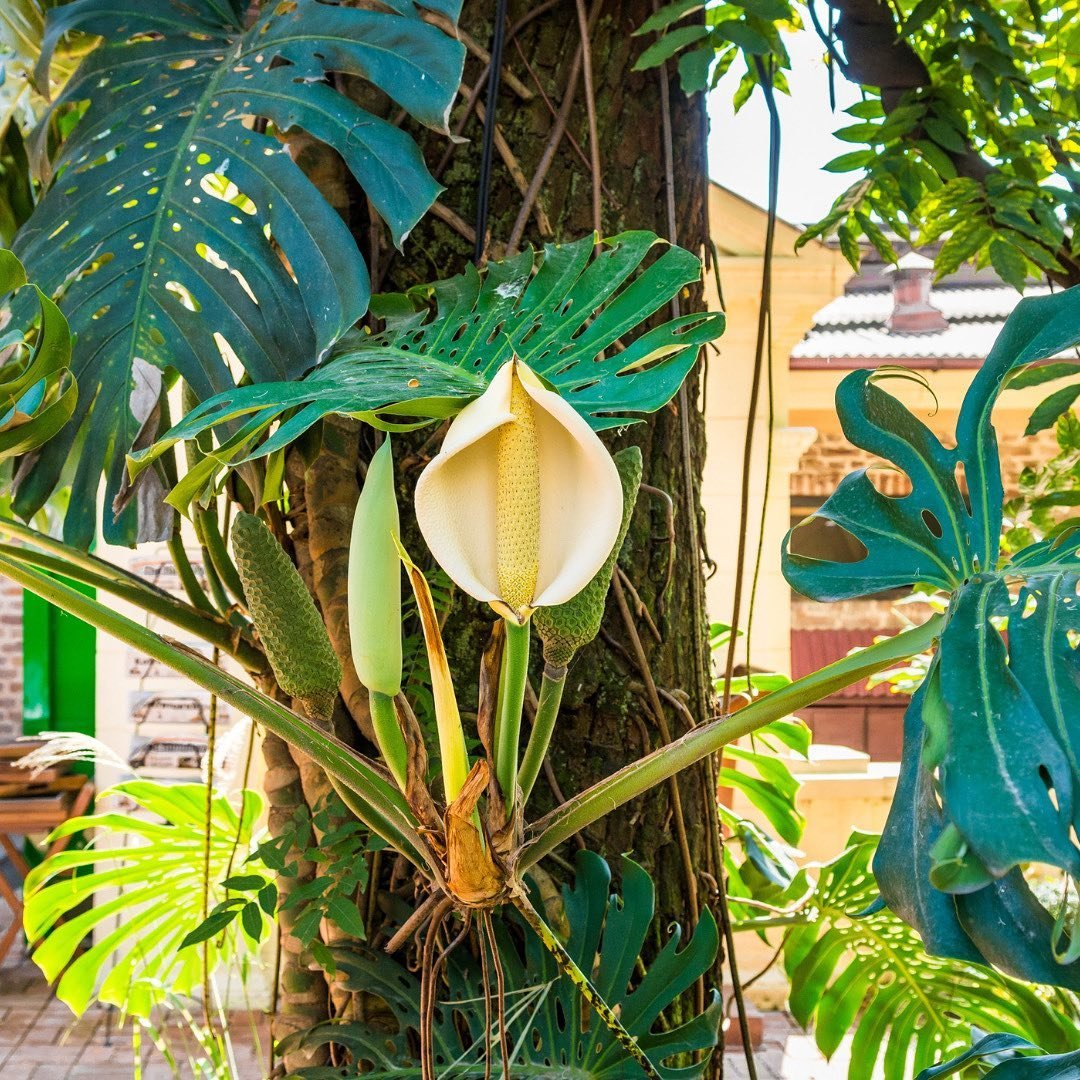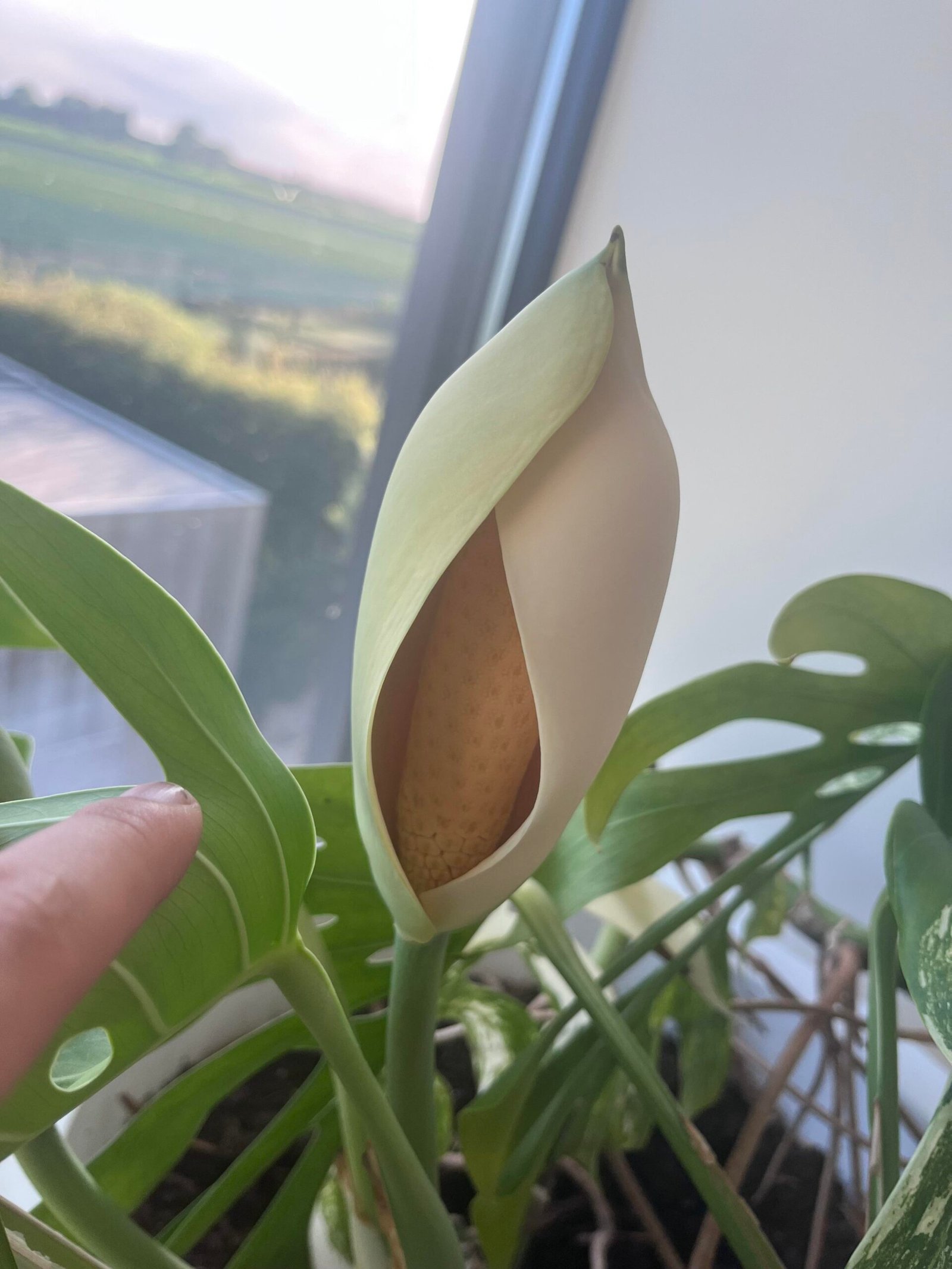Discover the fascinating journey of cultivating the exotic and delectable Monstera Deliciosa fruit, a culinary delight bursting with tropical flavors. This comprehensive guide unveils the tips, techniques, and care required for a successful harvest, straight from your own home or garden.
Monstera Deliciosa, also known as the Swiss Cheese Plant or Fruit Salad Plant, is a stunning tropical beauty that has captured the hearts of plant enthusiasts worldwide. While its striking foliage is a beloved addition to many homes and gardens, this remarkable plant has the potential to produce a unique and delicious fruit – the Monstera Deliciosa fruit. In this guide, we’ll dive into the fascinating world of growing this exotic fruit, unveiling the secrets to successful cultivation, from pollination to harvesting.
Here’s a detailed information chart for the fruit of Monstera deliciosa:
| Aspect | Details |
|---|---|
| Botanical Name | Monstera deliciosa |
| Common Names | Swiss Cheese Plant, Mexican Breadfruit |
| Plant Type | Perennial evergreen vine |
| Zones | USDA Zones 10-12 |
| Exposure | Bright, indirect light |
| Bloom Time | Rarely blooms indoors; typically flowers in summer outdoors |
| Fruit Time | 10-12 months after flowering |
| Height/Spread | Vine can grow up to 10-15 feet tall indoors, much taller outdoors with support |
Understanding the Monstera Deliciosa Plant

Before embarking on the journey of growing Monstera Deliciosa fruit, it’s essential to understand the plant itself. Native to tropical regions of Central and South America, this climbing vine is prized for its large, glossy leaves adorned with natural perforations, giving them a distinct and eye-catching appearance. However, beneath its ornamental allure lies the potential for a delectable culinary treat – the Monstera Deliciosa fruit.
The Flowering Process

Monstera Deliciosa plants are either male or female, and both genders are required for successful pollination and fruit production. The flowering process typically begins when the plant reaches maturity, which can take several years depending on the growing conditions.
Male Plants
Male Monstera Deliciosa plants produce a distinctive elongated spathe or flowering structure that encloses a cylindrical spadix covered in tiny flowers.
Female Plants
Female plants develop a shorter, thicker spathe that houses the ovaries, which, when pollinated, develop into the coveted Monstera Deliciosa fruit.
Pollination Techniques

Successful pollination is crucial for fruit production, and there are a few methods to ensure effective transfer of pollen from the male to the female plant:
1. Hand Pollination
This manual process involves carefully transferring pollen from the male spadix to the female ovaries using a small brush or cotton swab. It requires careful timing and attention to detail.
2. Natural Pollination
In their natural habitat, Monstera Deliciosa plants rely on insects, such as beetles or flies, to transfer pollen between male and female flowers. While possible indoors, this method can be challenging and less reliable.
3. Artificial Pollination
Some growers opt for artificial pollination techniques, using plant hormones or specialized tools to stimulate fruit development without the need for a male plant.
Caring for the Fruiting Plant

Once pollination is successful, the real work begins. Providing the right care and environment is crucial for the Monstera Deliciosa fruit to develop properly:
1. Humidity: These tropical plants thrive in high humidity levels, ideally between 60-80%. Misting the plant regularly or using a pebble tray can help maintain optimal humidity.
2. Temperature: Monstera Deliciosa prefers warm temperatures between 70-90°F (21-32°C). Cooler temperatures can slow or stunt fruit development.
3. Sunlight: Bright, indirect sunlight is ideal for fruiting plants. Too much direct sun can scorch the leaves, while too little light can inhibit fruit production.
4. Watering: Maintain consistent soil moisture, but avoid overwatering, which can lead to root rot. Allow the top inch or two of soil to dry out before watering again.
5. Fertilization: Provide a balanced, water-soluble fertilizer during the growing season to support fruit development and overall plant health.
The Fruit Development Process

Once pollination is successful, the ovaries on the female plant will start to swell and develop into the distinctive Monstera Deliciosa fruit. This process can take several months, and patience is key:
1. Fruit Formation: The initial stage involves the development of a green, cone-shaped fruit with hexagonal scales.
2. Color Change: As the fruit matures, it will gradually change color from green to a vibrant yellow or orange hue, signaling its readiness for harvest.
3. Aroma: Ripe Monstera Deliciosa fruits emit a sweet, fruity aroma that can fill the room, adding to the anticipation of the delectable treat.
Harvesting and Enjoying the Fruits

Knowing when to harvest the Monstera Deliciosa fruit is crucial for enjoying its full flavor and preventing over-ripening. Here are some tips for a successful harvest:
1. Color and Aroma: Look for fully colored fruits that release a sweet, fruity aroma. This is a good indicator of ripeness.
2. Texture: Gently squeeze the fruit – it should yield slightly to the touch but still feel firm.
3. Harvest Method: Carefully cut the stem attaching the fruit to the plant, leaving a few inches of stem attached to the fruit.
Once harvested, the Monstera Deliciosa fruit can be enjoyed in a variety of ways. Its flavor is often described as a combination of pineapple, banana, and mango, making it a delightful addition to tropical fruit salads, smoothies, or even baked goods. Some adventurous chefs have even experimented with using the fruit in savory dishes, adding a unique twist to their culinary creations.
Troubleshooting and Tips

Growing Monstera Deliciosa fruit can be a rewarding but challenging endeavor. Here are some common issues and tips to help ensure a successful harvest:
1. No Flowering: If your plant fails to flower, it may not be receiving the proper conditions for blooming. Ensure adequate light, temperature, and humidity levels, and consider repotting or pruning to encourage new growth.
2. Flower Drop: If flowers or immature fruits drop prematurely, it could be due to environmental stress, such as temperature fluctuations, low humidity, or improper watering.
3. Pest or Disease Issues: Monitor your plant for signs of pests or diseases, which can affect fruit development. Address any issues promptly with appropriate solutions.
4. Patience and Persistence: Growing Monstera Deliciosa fruit requires patience and persistence. Don’t be discouraged if your first attempt is unsuccessful – continue to provide the proper care, and your efforts may be rewarded with a bountiful harvest in the future.
Growing Monstera Deliciosa fruit is a unique and rewarding journey that combines the joy of gardening with the anticipation of a delectable tropical treat. By understanding the plant’s requirements, mastering pollination techniques, and providing diligent care, you can unlock the secrets to cultivating this exotic fruit right in your own home or garden. Embrace the challenge, cherish the process, and savor the sweet rewards of your labor – a truly captivating and tasty adventure awaits.
Pingback: Growing Monstera Deliciosa Fruit: A Comprehensi...
Pingback: Calathea Roseopicta: How to Plant, Grow and Care
Pingback: Potato Growth Stages: How to Plant, Grow and Harvest -
Pingback: Black Spot on Roses: A Comprehensive Guide for Healthy and Vibrant Blooms
Pingback: Grow Your Quirky Tractor Seat Plant: A Comprehensive Guide
Pingback: Growing a Fruitful Mango Tree: A Global Perspective -
Pingback: The Ultimate Guide to Chicken Manure Pellets: Benefits, Application and Best Practices
Pingback: The Ultimate Guide to Cleistocactus Icosagonus
Pingback: Ctenanthe : A Comprehensive Guide to Growing and Caring
Pingback: How to Grow and Care for Pitcher Plant: A Complete Guide
Pingback: Purple Heart : A Comprehensive Care Guide - Gardeners School
Pingback: Monstera Albo Care : Essential Tips for Healthy Growth
Pingback: Grow Your Own Lemon Tree: A Comprehensive Guide for Sweet Success!
Pingback: Calathea Makoyana: How to Plant,Grow and Care for It Indoors